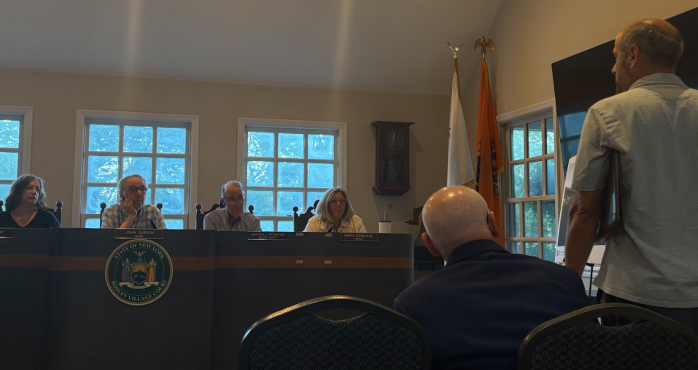Citizens Campaign for the Environment (CCE), a Farmingdale-based non-profit organization, released a report on Wednesday revealing that 21 Long Island water districts received two-year deferrals on meeting new state limits for certain chemicals in their water systems. Meanwhile, a spokesperson for the New York State Department of Health has called some information in the report “misleading.”
The state department of health issued the deferrals to the districts. Then, the districts sent letters to residents to inform them that the levels of PFOA, PFOS, and/or 1,4 dioxane would not meet state requirements, which were set in August 2020. Clean water advocates with CCE say most of these letters did not provide residents with enough information, and some misled residents about the health effects of the water contamination.
“These chemicals have serious public health consequences,” said Adrienne Esposito, executive director of CCE, “including being listed as a likely carcinogen by the U.S. EPA, specifically for liver cancer and kidney cancer. They also have been found to damage the immune and reproductive systems and cause developmental disorders.”
While some water districts gave detailed information, others left residents with more questions than answers, Esposito said. Others, such as the Water Authority of Western Nassau County, claimed in the letter that the drinking water was safe for all uses.
“We were surprised by some of these levels,” Esposito said. “Western Nassau County is up to 17.5 parts per billion when the drinking water standard is currently 1. Also, it has all three chemicals. So unfortunately they are getting the trifecta of water contamination.
“We object to the public being told that contamination in our drinking water is safe,” she continued. “That is a misleading statement based on political science, not based on biological science. That is one particular criticism we have of this deferral program.”
The Water Authority of Western Nassau has added a timeline on its website for when projects to remove these chemicals will be underway. So have several other districts, and others have simply stopped using certain wells that had contaminants.
Water systems with deferrals are “required to establish an approved timetable of compliance, provide notification to their customers, and regularly update their customers on the progress being made on the installation of treatment systems,” officials with the state department of health said.
“To be clear, an approved deferral is not a delay in compliance regarding a water supplier’s obligations for testing, public notification, or mitigation,” said Erin Silk, a spokesperson for the health department. “Instead, a deferral effectively jumpstarts the process for those water suppliers who have prepared for compliance ahead of the MCL [maximum contaminant level] adoptions, and ensures they can meet all requirements, including notification and a plan for remediation, without technically being in violation.
“The [CCE report] also contains misleading data on the levels of PFOA, PFOS and 1,4-dioxane present in the water being supplied during the deferral process,” Silk added. “The deferral extension raised by CCE for PFAS is something NYS DOH will be reviewing closely, and we can assure the public that current timelines will be maintained to the greatest extent possible.”
CCE’s report lists all water districts, which of the three chemicals they deferred, the levels of those contaminants in the water, and the population they serve. This information comes directly from the water districts themselves, Esposito said.
CCE has recommended that water districts better inform residents about the levels of contaminants in their water, how many wells are impacted, and a timeline for compliance with the regulations. CCE is also calling on the state health department to deny any third-year deferrals and to provide all information about deferred districts on its website.
After CCE released the report on Wednesday, New York American Water Authority (NYAW), which is one of the 21 districts with a deferral, posted on Facebook that it is “complying with New York State’s new regulations on emerging compounds.”
“Maximum contaminant levels (MCLs) are set far below levels that cause health effects,” the NYAW website states. “According to the New York Department of Health, because MCLs are set at levels with a large margin of protection, an exceedance of an MCL does not mean that water is unsafe for use while the public water system takes actions to reduce the levels.”


































